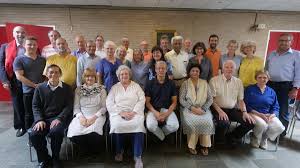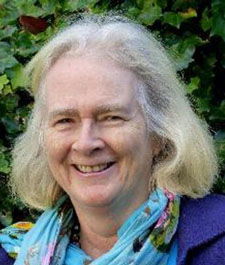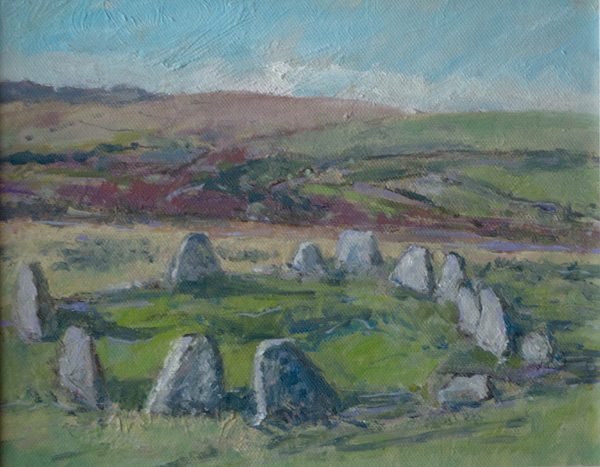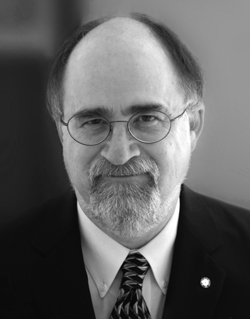Implementing the Ageless Wisdom
Printed in the Fall 2018 issue of Quest magazine.
Citation: Boyd, Tim, "Implementing the Ageless Wisdom" Quest 106:4, pg 14-17
By Tim Boyd
International President
The following is a summary of the planning meeting of the international Theosophical Society held in Naarden, the Netherlands, in July 2018.
Mission Statement
To serve humanity by cultivating an ever-deepening understanding and realization of the Ageless Wisdom, spiritual Self-transformation, and the Unity of all Life.
Since its founding in 1875 the Theosophical Society (TS) has grown into an organization with membership, branches, and sections in more than seventy countries worldwide. The scope of TS activities has similarly grown and changed over the years, with publishing, education, programs, lectures, TS centers, communication, and meetings assuming new forms to suit ever-changing times. One of the recognized features of our time is the rapid nature of change. Unlike the recent past, no nation, culture, or geographical location is unaffected by the currents of change sweeping the planet. This condition places strong demands on all of us. More is required of us than mere repetition of past formulas or insistence upon “staying the course” in maintaining the forms of previous activities. With all of its uncertainty, this is a powerful moment in which we are living. It is a time that cries out for the depth of understanding and potential for harmonious living that the Ageless Wisdom can provide. The question for the TS now, as in the past, is “How can we communicate this wisdom to the world in a usable way?”
 |
|
| Leaders of international TS Sections at the Naarden conference. International president Tim Boyd is in the front row, center. |
Historically, the General Council (GC) of the TS has met for a few hours once each year on the day before the opening of the annual International Convention at Adyar. This approach has placed severe limitations on the ability for heads of national Sections to share necessary information, and allowed little or no time for meaningful dialogue on long-range plans for the international organization. In an effort to provide an opportunity for more extended planning, in 2015 a second meeting specifically devoted to strategic planning was added immediately following the close of convention. At the GC meeting in December 2016 it was determined that a five-day planning meeting would be held in March 2017 at the International Theosophical Centre in Naarden, the Netherlands. That meeting was primarily focused on brainstorming—allowing the space for all manner of ideas to come to light and be considered. Mere ideas were not enough, and each of the more than forty projects proposed at that meeting had people assigned to make them real.
During the course of the year the progress and difficulties of the various projects were monitored by a small coordinating team, charged with both reporting and helping to keep the work on track. Special attention was given to eleven priority projects. In the beginning of July this year we met again at the ITC in Naarden, this time as an official GC meeting. In all, thirty members (twenty GC members and ten invited participants) attended from a variety of countries: the Netherlands, England, Belgium, India, the U.S.A, Kenya, Finland, Sweden, New Zealand, the Philippines, Spain, Germany, Italy, Brazil, and Argentina. It is the intention to formalize this extended meeting as an additional annual meeting of the GC. The report which follows is a summary of this year’s gathering.
1. The policy paper includes the mission statement of the TS.
The policy paper discusses the direction of the work of the TS, and will frequently be updated. All policies are, of course, subject to approval of the GC. A major feature is the mission statement included above, which emphasizes the TS role in and for the world, the reason why it exists. It is extremely important, as it clarifies the task or role of the TS in the world, not only for TS members, but also for people at large. It also refers to the Three Objects of the TS. For internal use it may have a strong impact, with a greater focus on our work, on what members and people can/should expect, such as our Lodge work. It clarifies that we are not to please the spiritual ambitions of our members, nor a New Age style of organization. As a statement, it can be considered “the other side of the coin” of our Freedom of Thought statement, being the practical implication of our Three Objects. Sections are requested to include the mission statement in all TS publications, while TS writers are encouraged to write articles, giving their view on the statement.
2. Introductory books lowering threshold for people at large.
Many of the introductory books we continue to reprint are over 100 years old. While pearls of wisdom in these books are timeless, communication has changed considerably since, as has our approach to theosophy. Many recently published books are for “seasoned” TS members, whereas some of the introductory books deal more with the interest of the writer, rather than the reader. The public at large spends little time reading complex books to meet with initial interest. The plan is to publish a range of contemporary low-cost introductory publications (books, brochures, and other communication channels) with special emphasis on the spiritual life of the beginning reader, where possible making links with practical daily life. Thus theosophical concepts become recognizable for the reader in a modern, undogmatic way, thus raising interest, triggering further contacts, and deeper study. The publications, if possible translated in all major languages, can also be used for introductory courses in theosophical lodges.
3. Make TS Publishing Houses future-proof.
The publishing world has been undergoing very rapid ranges due to the popularization of ebooks and the rising cost of printing and distribution. The different theosophical publishing houses are also undergoing difficulties in sustaining their operations. It has been deemed desirable that publishers explore areas where they can cooperate with each other, adapt to new approaches in publishing and distribution, and seek ways to increase the reach of theosophical literature in the world. The team on this project has proposed that there be one global e-bookstore for all theosophical books, taking advantage of the present capability of Quest Books U.S.A. to sell ebooks on their site. This is now being explored.
4. Meditation course for a broader public.
One of the services that the TS can offer is a meditation course for the general public—those seeking inner peace or equanimity. The team is now gathering time-tested practices that have been used within and outside the TS, and a few options will be recommended to the different Sections.
5. Establishing theosophical schools.
A major project that had been agreed upon is establishing theosophical schools in various parts of the world. As a specific initiative, the General Council has approved founding a theosophical school in Adyar up to high school level to start mid-2019. In addition, new initiatives are now going on for new schools in the Philippines, Argentina, and Brazil.
6. Theosophy World: An online theosophical resource center.
Theosophy.world is an interesting website to explore all important theosophical resources, an exciting development in the promulgation of theosophy and spreading the message of the ancient wisdom teachings. There is a large diversity of material ranging from articles to videos, ebooks to photo galleries, early publications, quotes, poems, audio archives and much more. It also links to other useful like-minded websites, resource libraries and theosophical centres, becoming a truly central place to start searching from. New content is being added almost daily so students are advised checking it out by entering <theosophy.world> into the web browser. It is freely available to the general public and TS members alike. We hope the site continues to be a growing shared resource, valued by all theosophists and other truth seekers. It is currently in English but plans are afoot to make content available in other languages soon. Key questions are: how to enrich the current site, what are reliable sources, how to take the current site forward, and get more support from Sections and members. If you have any content you would like to share or would like to improve, please email content@theosophy.world.
7. Internal site sharing best practices within the TS.
Around the world many Sections have already developed many practices that have proven successful and effective in many aspects of theosophical work, such as membership record and lodge management, establishment of retreat centers or communities, dissemination methods, online courses, seminars, nurturing new members, and so on. Sections which have difficulties in these areas can learn from their experiences, difficulties, and successes. They do not have to start from scratch. A team is now compiling best practices on theosophical work from Sections around the world and this will be uploaded in a theosophical resource site. This will have restricted access and will be limited to certain officers of the TS.
8. TS Centers.
The Theosophical Centers that have been established around the world are some of the unique gems of the TS. While every center is unique in its own right and often autonomous in its governance structure, they also have much in common. Several have been in operation for generations and have rich histories. The centers can be regarded as theosophical laboratories, where activities and programs are intended to make manifest the mission and objects of the TS. The intention of this project is to implement strategies that will enhance the strength and vitality of these valuable resources in the twenty-first century. The emphasis of the project is on volunteering, programming, information sharing, and collaboration. Minor Lile has been appointed as TS Centers Coordinator to facilitate this project. Minor and his wife, Leonie Van Gelder, were managers and residents at Indralaya, a theosophical center in the U.S., for nearly twenty years. He can be contacted by email at mlile@theosophical.org.
9. Harmonizing core teachings.
For the past one hundred years, certain basic theosophical teachings that have been popularized in the TS have internal contradictions or have terms or nomenclatures that have different meanings and have caused confusion among new students of theosophy. Examples of these are the use of the words Monad, astral body, Logos and the different versions of the principles of the human being, life after death, etc. While it is not the intention to make final definitions, which would contradict the freedom of thought declaration, recommendations for initial use for new students can be useful. A team has been tasked to solicit the opinions of writers, leaders, and scholars to hopefully come up with proposed harmonization of basic teachings for introductory theosophical literature. Whatever recommendation the team proposes will not be taken as an official position of the TS.
10. International speakers list.
The list of international speakers is aimed to create an authorized list of international speakers, who are competent and available to be invited to give lectures or seminars, or conduct schools or workshops. The list would be updated yearly by a team at Adyar, and introduced at the December Council meeting. Recommended criteria for an international speaker has been created. These criteria are very important, as each speaker acts as a representative of the international TS. The aim is also to create a policy for funding the travels. Travels should generally be covered by the inviting Section, possibly supported by the regional Federation. Overseas travels may be considered to be funded. Aim is also to support Section or Federation for weaker areas to encourage theosophical study.
11. Self-Transformation Seminars.
The Self-Transformation Seminars have been conducted in about twenty countries and facilitators have been trained in ten countries. It has been found to be useful and effective as a seminar offered by the TS, both for members and the general public, for personal development and spiritual growth. The plan is to encourage more Sections to conduct this seminar and to train more facilitators who can transmit this to the public.
12. Animal rights and welfare.
Nowadays many animals are being bred solely for production, therefore society accepts factory farming as a means for producing meat. Humankind should know by now that animals do have emotions, can feel pain, and that some animals even have a level of self-awareness and a remarkable sense of justice. Knowing this, the TS should not remain silent about the indescribable suffering that is inflicted on our younger brothers and sisters. Although the TS as an organization cannot align itself with any movement, it is imperative that we help cultivate an informed awareness of this issue. A working group created a concept manifesto dealing with this theme: “A society without any animal products would be ideal.” Primarily because of the appalling suffering caused to animals, a vegan diet is what we strongly propagate, with its obvious environmental considerations and benefits.
Future Outlook
The Theosophical Society is part of a movement that is planetary in scope. As we learn to move toward a collaborative approach in our work, our effectiveness and relevance will grow. Now, as in the past, our greatest resource is our committed members. We look forward to an exciting development within the TS, where teams all over the world are working together across a range of projects to fulfill the Theosophical Society’s mission of serving humanity. New projects will be added in due time. This most important process will be coordinated, followed, and approved by the General Council.


 In Hinduism, there are many pairs of male and female gods, devatas and devis, which express unique attributes or energies that interplay throughout the universe. The best-known are those of the Trimurti, the holy trinity of Hinduism: Brahma and his consort Saraswati, Vishnu and Lakshmi, and Shiva and Parvati. These pairs of devatas and devis represent a dual energy, called purusha and prakriti.
In Hinduism, there are many pairs of male and female gods, devatas and devis, which express unique attributes or energies that interplay throughout the universe. The best-known are those of the Trimurti, the holy trinity of Hinduism: Brahma and his consort Saraswati, Vishnu and Lakshmi, and Shiva and Parvati. These pairs of devatas and devis represent a dual energy, called purusha and prakriti.  On a cold spring day in March 1981, a small band of women gathered at the Nine Ladies stone circle in the Peak District of Derbyshire in the north of England. They had come seeking inspiration for a new vision of women’s spirituality and a common way to work together, and they had been drawn to this spot by the name of this circle.
On a cold spring day in March 1981, a small band of women gathered at the Nine Ladies stone circle in the Peak District of Derbyshire in the north of England. They had come seeking inspiration for a new vision of women’s spirituality and a common way to work together, and they had been drawn to this spot by the name of this circle.
 The last several years have seen an upsurge of attention to gender issues. Whether it has been the controversies over transgender bathroom policy, the heavily publicized transitioning of Bruce Jenner into Caitlyn Jenner, or Facebook continually upping the number of gender identities that its members can choose from—they stood at seventy-one at last count—gender has commanded our attention at every turn.
The last several years have seen an upsurge of attention to gender issues. Whether it has been the controversies over transgender bathroom policy, the heavily publicized transitioning of Bruce Jenner into Caitlyn Jenner, or Facebook continually upping the number of gender identities that its members can choose from—they stood at seventy-one at last count—gender has commanded our attention at every turn.